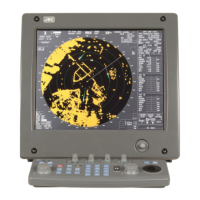S-1
1 INTRODUCTION
1.1 Read Me
About this manual
See the INSTRUCTION MANUAL for details.
Maintain this SIMPLIFIED MANUAL so that operators can refer to it at anytime.
About radar equipment
Use the radar only as a navigation aid. The final navigation decision must always be made by the
operator him/herself. Making the final navigation decision based only on the radar display may cause
accidents such as collisions or running aground.
About sea clutter suppression
When using the sea clutter suppression function, never set the suppression level too high canceling out
all image noises from the sea surface at close range.
Detection of not only echoes from waves but also targets such as other ships or dangerous objects will
become inhibited.
When using the sea clutter suppression function function, make sure to choose the most appropriate
image noise suppression level.
About rain/snow clutter suppression
When using the rain/snow clutter suppression function function, never set the suppression level too
high canceling out all image noises from the rain or snow at close range.
Detection of not only echoes from the rain or snow but also targets such as other ships or dangerous
objects will become inhibited.
When using the rain/snow clutter suppression function function, make sure to choose the most
appropriate image noise suppression level.
About target tracking (TT) function
Use target tracking function only as a navigation aid. The final navigation decision must always be
made by the operator him/herself. Making the final navigation decision based only on tracking target
information may cause accidents.
Tracked target information such as vector, target numerical data, and alarms may contain some errors.
Also, targets that are not detected by the radar cannot be acquired or tracked.
Making the final navigation decision based only on the radar display may cause accidents such as
collisions or running aground.

